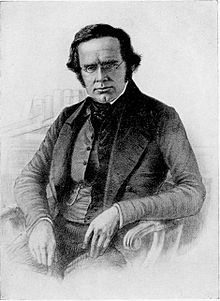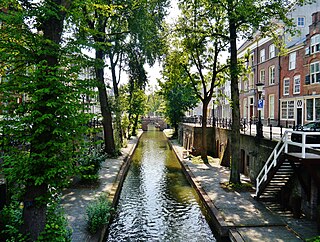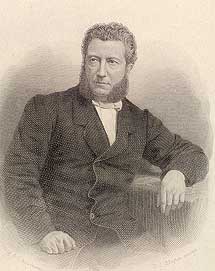
Jan Jakob Lodewijk ten Kate was a Dutch divine, prose writer and poet.

Prostitution in the Netherlands is legal and regulated. Operating a brothel is also legal. De Wallen, the largest and best-known Red-light district in Amsterdam, is a destination for international sex tourism.
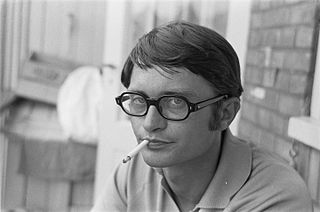
Remco Campert is a Dutch author, poet and columnist.

Roelof (Roel) Kuiper is a Dutch historian, philosopher, ideologue, politician and university professor. He is a member of the Dutch Senate, and is professor of Reformational philosophy at the Erasmus Universiteit Rotterdam in the name of the Association for Reformational philosophy, teaching Society Issues at the Christelijke Hogeschool Ede and Gereformeerde Hogeschool Zwolle and Political and social philosophy at the Vrije Universiteit Amsterdam (VU).

Arthur Valentijn Japin is a Dutch novelist.

Samuel Iperuszoon, Knight Wiselius was a successful Dutch lawyer and a prominent Patriot and democrat, involved in the dismantling of the Dutch East India Company (VOC) and the negotiations over the Cape. Wiselius was a witty, Voltairian spirit with political views far ahead of his time who would end his days writing dramas on Classical themes. ... Wiselius corresponded with nearly all the main players at the time of the Batavian Republic and it would be impossible to know that period completely without his carefully kept and neatly written correspondence. He was also a poet, historian and superintendent of the police.
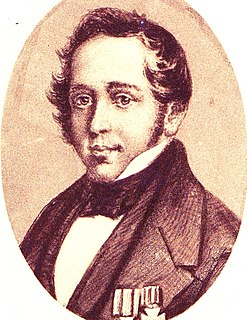
Willem Vrolik was a Dutch anatomist and pathologist who was a native of Amsterdam. He was a pioneer in the field of vertebrate teratology.
Johan Herman Bavinck was a Dutch pastor, missionary and theologian.
Ottho Gerhard Heldringstichting(Dutch: Ottho Gerhard Heldring Foundation) is a Dutch orthopaedic institution in Zetten, Netherlands. The facility is a private managed centre for youth with severe behaviour and often also psychiatric problems. The facility caters for youth from 12 – 18 years old (sometime max 24 at end of stay, normal intelligent and without very serious addiction problems. Youth living at the facility are sent via the court when the judge decides that juvenile needs treatment in a closed setting.

Christianus Petrus Eliza Robidé van der Aa was a Dutch jurist and author. He was the son of Pierre Jean Baptiste Charles van der Aa.
There is a small community of Nigerians in the Netherlands, which began to grow in the late 1980s.

Willem Jan Otten is a Dutch prose writer, playwright and poet, who in 2014 won the P. C. Hooft Award for lifetime literary achievement.
Rolf Hendrik Bremmer is a Dutch academic. He is professor of Old and Middle English, and extraordinary professor of Old Frisian, at Leiden University.
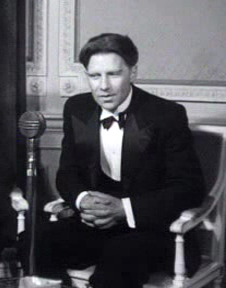
A. den Doolaard is the pseudonym of the Dutch writer and journalist Cornelis Johannes George (Bob) Spoelstra Jr.

The large electrostatic generator is a large handcrafted electromechanical instrument designed by Martin van Marum and built by John Cuthbertson in 1784 for the Teylers Museum in Haarlem, where it forms the centerpiece of the instrument room. The concept of an electrostatic generator was new, and the battery (array) of leiden jars was the largest ever built. The two glass disks of the generator are 1.65 meters in diameter, and the machine is capable of generating a potential of 330,000 volts.

Hendrik Pierson was a Dutch Lutheran minister and member of the Réveil religious revival movement. He was president of the Ottho Gerhard Heldringstichting, an asylum for reformed prostitutes, from 1877 to 1914. He was one of the leaders of the campaign to abolish state regulation of prostitution, and in 1898 became president of the International Abolitionist Federation..
Iremfrid was a 10th-century noble born to a family which had its power base in the delta region where the Rhine and Maas rivers meet near the modern border of the Netherlands and Germany, the eldest son of Ricfrid Count of Batavia, and his wife Herensinda. The memorial of Ricfried refers to him as either "Rector Yrimfredus" or "Victor Yrimfredus", neither of which are interpreted as meaning that he was a count at the time the grave was made. Aarts has for example interpreted the term "rector" as meaning he was a lay abbot of an Abbey, and Jongbloed has speculated that "victor" means he was successful in some military endeavor.
Cornelis Hoogendijk was a Dutch art collector.

Oscar van Hemel was a Dutch-Belgian violinist, music teacher and composer of contemporary classical music. His work includes two operas and symphonies.
